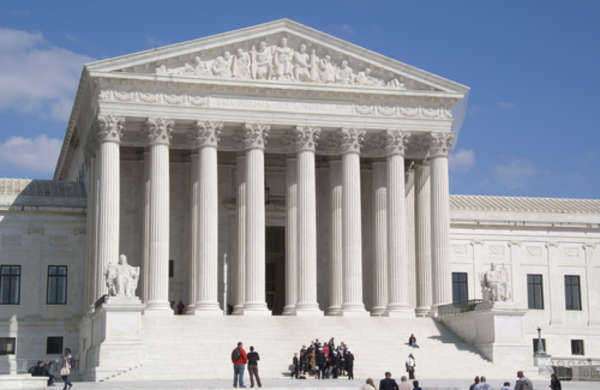Table of Contents

Marbury v. Madison is a landmark United States Supreme Court case that established the principle of judicial review, which gives the court the authority to strike down laws and government actions that violate the Constitution. The case was argued in 1803 and is considered one of the most significant in American history, as it established the Supreme Court’s power to interpret the Constitution and established the principle of checks and balances in the government. This article provides a detailed overview of Marbury v. Madison, including when it happened, how it ended, the process, and how it has influenced the United States legal system. Additionally, it covers ten fascinating facts about this historic case.
Background of the Case
In 1800, during the presidency of John Adams, the Federalist-controlled Congress passed the Judiciary Act of 1801. Among other things, the act created new federal court judgeships and established more circuit courts. In one of his last acts before leaving office, Adams appointed William Marbury as a justice of the peace in the District of Columbia. However, before Marbury could assume his position, Adams’s successor, Thomas Jefferson, ordered his Secretary of State, James Madison, to refuse to deliver Marbury’s appointment. Marbury sued for his commission, arguing that the Judiciary Act of 1789, which gave the Supreme Court authority to issue writs of mandamus, allowed him to skip the lower courts and go directly to the Supreme Court.
Proceedings of the Case
Marbury v. Madison was heard by the Supreme Court in 1803. The central issue before the Court was whether the Judiciary Act of 1789, which gave the Supreme Court the power to issue writs of mandamus, was constitutional.
In a unanimous decision, the Supreme Court held that the Judiciary Act of 1789 violated the Constitution and was therefore invalid. Chief Justice John Marshall argued that the Constitution established the Supreme Court’s authority to interpret the Constitution and declared that the judiciary had the power of judicial review, which allowed it to overturn laws or actions that were contrary to the Constitution.
Outcomes of the Case
The decision in Marbury v. Madison had significant implications for the US legal system. It established the principle of judicial review, which is now a bedrock of American constitutional law. The decision also set the stage for future battles over constitutional interpretation between the federal government and individual states.
Impact on the US Legal System
The decision in Marbury v. Madison had a lasting impact on the U.S. legal system. Here are ten interesting facts about the case and its legacy:
- Marbury v. Madison is considered one of the most influential cases in American legal history, and it established the principle of judicial review.
- The decision in Marbury v. Madison established the Court’s role as the final authority on constitutional interpretation, giving it the power to strike down laws and actions that violate the Constitution.
- Marbury v. Madison was the first time the Supreme Court struck down a law as unconstitutional.
- The decision in Marbury v. Madison helped establish the principle of checks and balances in the government, as it allowed the judicial branch to act as a check on the other two branches.
- The ruling in Marbury v. Madison established a precedent that has been followed by all subsequent Supreme Courts, giving the Court a powerful tool to protect individual rights and liberties.
- Marbury v. Madison is often cited by scholars as one of the key moments in America’s constitutional history.
- The decision in Marbury v. Madison reflected a philosophical shift in American politics, as some founders began to view the federal government as an entity that needed to be checked against abuse of its powers.
- The ruling in Marbury v. Madison has been used in countless cases since, encompassing everything from the rights of citizens to the role of the federal government in regulating business.
- Marbury v. Madison marked a major milestone in the development of the United States legal system and established the Supreme Court as a powerful institution in American society.
- The legacy of Marbury v. Madison extends beyond the judiciary to the broader discussion of the balance of power between the states and federal government and the protection of individual rights.
In conclusion, Marbury v. Madison is a landmark US Supreme Court case that established the principle of judicial review, giving the Court the power to interpret the Constitution and strike down laws and actions that violate it. The decision had a profound impact on American constitutional law and helped establish the principle of checks and balances in the government. Despite ongoing debates over the proper role and scope of judicial review, the legacy of Marbury v. Madison remains a powerful example of the importance of constitutional interpretation and the role of the Supreme Court in protecting individual liberties.
Marbury v. Madison: The Background
The case of Marbury v. Madison is a landmark Supreme Court case. Marbury v. Madison is one of the most influential and groundbreaking legal proceedings in the history of the United States. The Marbury v. Madison case was the first of its kind. It dealt with administrative law, which is classified as the scope of the law that involves any or all interactions with the Federal Government.
The Marbury v. Madison case began with John Adams. The former president attempted to appoint William Marbury as a Justice of the Peace but failed to complete the formal appointment before his presidency was terminated. As a member of the Federalist Party, John Adams attempted to appoint as many of his fellow Federalists to the cabinet of the President of the United States.
The case of Marbury v. Madison deals with the process of appointing these high-ranking government officials. The appointment procedure for Justices of the Peace required completion within a President’s term. An official appointment had to be made while the President was active in his duties.
William Marbury’s appointment was not completed in this timeframe. John Adams’s presidency ended before he could formally appoint Marbury.
Expecting to be permitted as a Justice of the Peace, Mr. Marbury assumed his role but was denied by the new president, Thomas Jefferson, and his Secretary of State, James Madison. Jefferson and Madison rejected Marbury’s appointment by refusing to finalize the commission process.
Frustrated and upset that his appointment was suspended, William Marbury brought the case before the Supreme Court. The case of Marbury v. Madison was reviewed by Chief Justice John Marshall. After the trial, Mr. Marshall said that Article III of the United States Constitution did not allow one branch of the Federal government to force action on the part of another branch. In Marbury v. Madison, John Marshall said that William Marbury was entitled to the position that was granted by John Adams, but the final decision ultimately belonged to the new President, Thomas Jefferson.






















